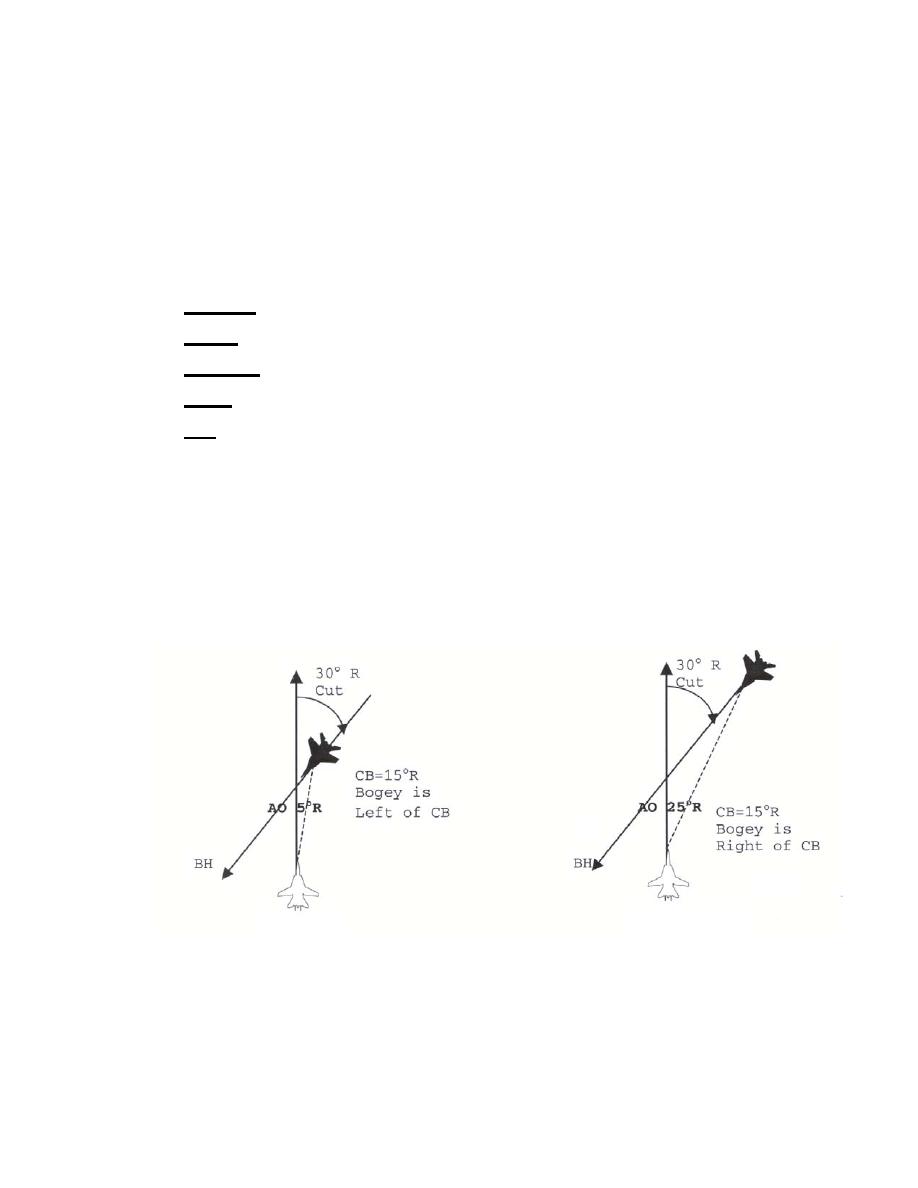 |
|||
|
|
|||
|
|
|||
| ||||||||||
|
|  INTERCEPT PROCEDURES TEXTBOOK
Drift
To visualize the concept of drift when a bogey is off of collision bearing, imagine driving
down a straight highway and seeing a billboard off to the right up ahead. Since your car and the
billboard are not on collision, the sign will appear to drift across your windshield to the right.
Drift is measured as the degrees of change in angle off per mile of slant range. There are five
categories of drift rates:
On collision bearing; a vertical line on the B-scope.
1. Intercept:
.5 azimuth change per mile of slant range.
2. Visible:
3. Moderate: 1 azimuth change per mile of slant range.
2 azimuth change per mile of slant range.
4. Sharp:
3 or greater azimuth change per mile of slant range.
5. Flat:
When a collision bearing is established, AO = CB = CATA. Once this is accomplished, the
appropriate descriptive commentary will be: "Bogey is on collision."
Bogey Off Collision Course
If a collision bearing intercept is not established, then one of two things can happen. Either
the bogey will pass in front of the fighter (a good thing at close range), or the fighter will pass in
front of the bogey (a bad thing).
Figure 2
Figure 3
35
|
|
Privacy Statement - Press Release - Copyright Information. - Contact Us |